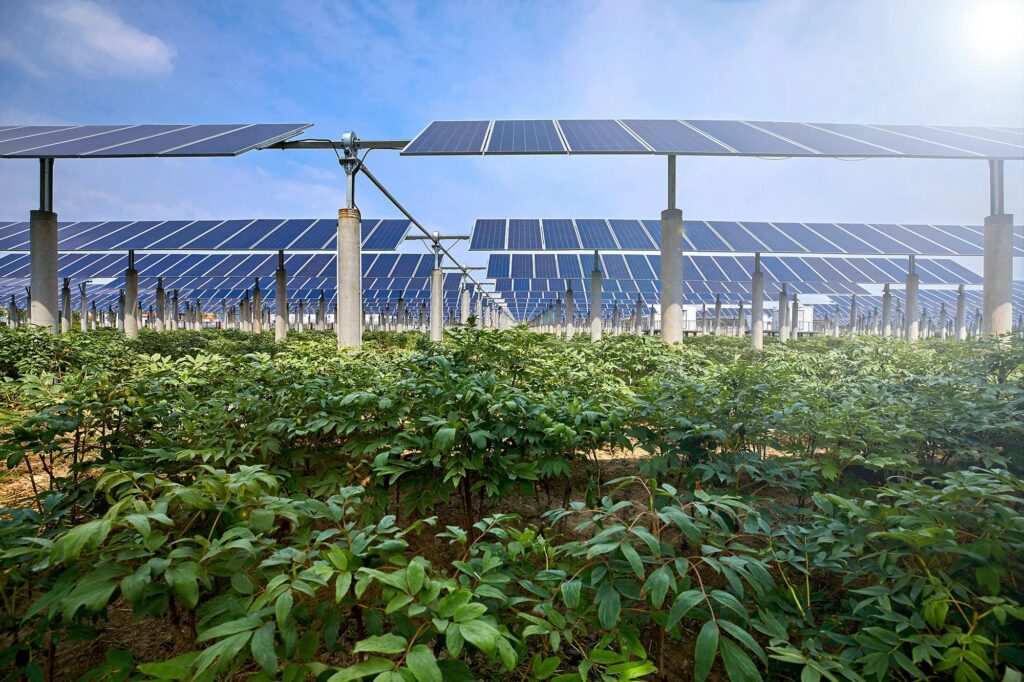Agrivoltaics is a term derived from the combination of “agriculture” and “photovoltaics” (solar energy). It refers to the co-locating of agriculture and solar panel installations on the same area of land, thereby creating a complementary relationship between the two. This practice enables the efficient use of land and resources while offering multiple benefits.
- Land Use Efficiency: By utilizing the same land for both agriculture and solar energy production, agrivoltaics optimizes land use, especially in regions where land availability is limited.
- Crop Protection and Enhanced Growth: The shading provided by the solar panels can help protect crops from excessive heat, reduce water evaporation, and minimize temperature fluctuations. This controlled environment can lead to improved crop yields and better water usage efficiency.
- Diversification of Income Streams: Integrating agriculture with solar energy production allows farmers to diversify their income sources. In addition to agricultural yields, farmers can benefit from the electricity generated by the solar panels.
- Climate Change Mitigation: The combination of agriculture and solar energy helps mitigate the impacts of climate change by promoting renewable energy production while fostering sustainable agricultural practices.
- Conservation of Resources: Agrivoltaics can contribute to the conservation of water resources by reducing evaporation rates in the farming area, thereby promoting water efficiency in agricultural practices.
- Enhanced Sustainability: Integrating solar panels with agriculture promotes sustainable land management practices, leading to improved soil health, reduced erosion, and overall environmental conservation.
The implementation of agrivoltaics requires careful planning to ensure that the crops and solar panels are compatible and do not hinder each other’s performance. Factors such as the choice of crops, panel height, and spacing between panels are essential considerations in the design and implementation of successful agrivoltaic systems. As this field continues to develop, ongoing research and technological advancements aim to maximize the benefits of both agriculture and solar energy production.


